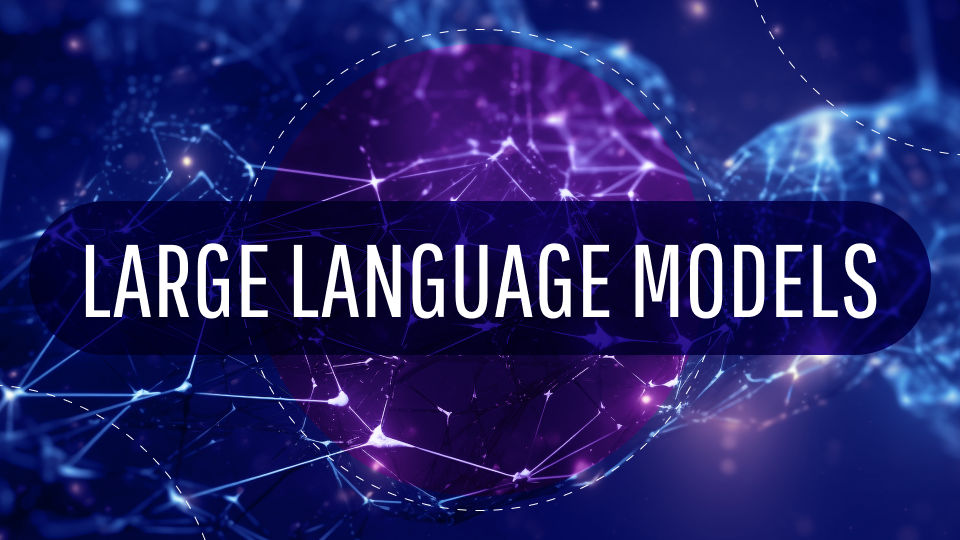- What Is Discovery Phase?
- What Is The Analysis Needed For?
- What Is The Duration Of The Discovery Phase?
- Project Discovery Team
- What Will Happen If You Skip The Discovery Phase?
- What Do We Do During The Discovery Phase?
- What Are The Main Benefits Of The Discovery Phase?
- Tools for a Discovery Phase
- What Is The Average Cost Of The Discovery Phase For The IT Project?
- How Geniusee Conducts the Discovery Phase?
- Conclusion
Nowadays, it is wise to start a software development project with a preliminary comprehensive and detailed analysis. The initial stage of any IT project should be researched. So, we decided to create something like a project discovery checklist for everybody who plans to create or update their software.
In This Article:
What Is Discovery Phase?
The product discovery phase of software development is a procedure for collecting information that gives an understanding of the industry for which the product is being developed, of your customer’s business, and the target audience. In other words, it is the project planning stage. It is important to gain a deep understanding of what the customer’s expectations are like, who are decision-makers on their part, as well as who are the product end users.
The main purpose of the preliminary analysis is to provide a technical proposal to the customer. To do this, you need to find out about the needs of the client as much as possible and create a separate document with product requirements.
All the details that you will find out during the project discovery phase will help you determine the amount of work, the project timeline, and the plan for fulfilling the tasks of the project. It will also help ensure that the customer receives a high-quality software product designed for their needs.
What Is The Analysis Needed For?
- To find out the motives, goals, and problems of users;
- to understand the context of product use;
- to find new ideas for development;
- to understand what users expect and their relation to the product.
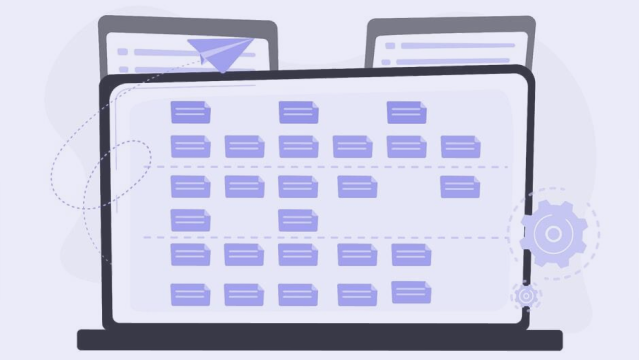
On that subject
Business Analysis Artifacts And Treasures
Find out about business analysis artifacts and their functions in business development.
Read moreWhat Is The Duration Of The Discovery Phase?
- For medium-sized projects - 1-2 weeks.
- For large projects - 3-4 weeks.
Project Discovery Team
- Project Managers/Owners. They are responsible for defining the product vision, understanding market needs, and aligning the development process with business goals. The project manager gathers insights from stakeholders, conducts market research, and collaborates with the development team to ensure the product meets user requirements. In other words, they create project boundaries.
- Business Analysts. These discovery team members contribute to the project discovery phase by conducting research, gathering and analyzing user feedback, and identifying business requirements. They work closely with stakeholders to define product features, prioritize functionalities, and translate business needs into technical requirements.
- Designers. They conduct user research, create user personas, and develop prototypes or wireframes to visualize the product's user interface and user experience. UX/UI designers work hand-in-hand with the development team to ensure the product is intuitive, user-friendly, and aligned with user expectations.
- Developer. They collaborate with project managers, business analysts, and UX designers to assess the feasibility of proposed features, identify technical constraints, and offer insights on potential project implementation approaches. Their input helps in determining the viability of certain ideas and refining the technical scope of the project.
- Team Leads. The project team lead takes on the responsibility of evaluating the technical feasibility of proposed features, assessing potential risks and constraints, and providing technical insights to guide decision-making. They collaborate with other discovery team members to ensure that the product vision aligns with technical capabilities, helping to shape the overall direction of the project during the IT project discovery phase.
- Account Manager. They play a crucial role in bridging the gap between the client and the development team, ensuring effective communication, understanding client requirements, and aligning project objectives. They act as a liaison, facilitating collaboration, managing expectations, and ensuring that the product discovery phase delivers insights and outcomes that align with the client's needs and goals.
- Stakeholders. These individuals may include product owners, executives, marketing representatives, sales personnel, or subject matter experts who can provide valuable insights, domain knowledge, and market perspectives.
What Will Happen If You Skip The Discovery Phase?
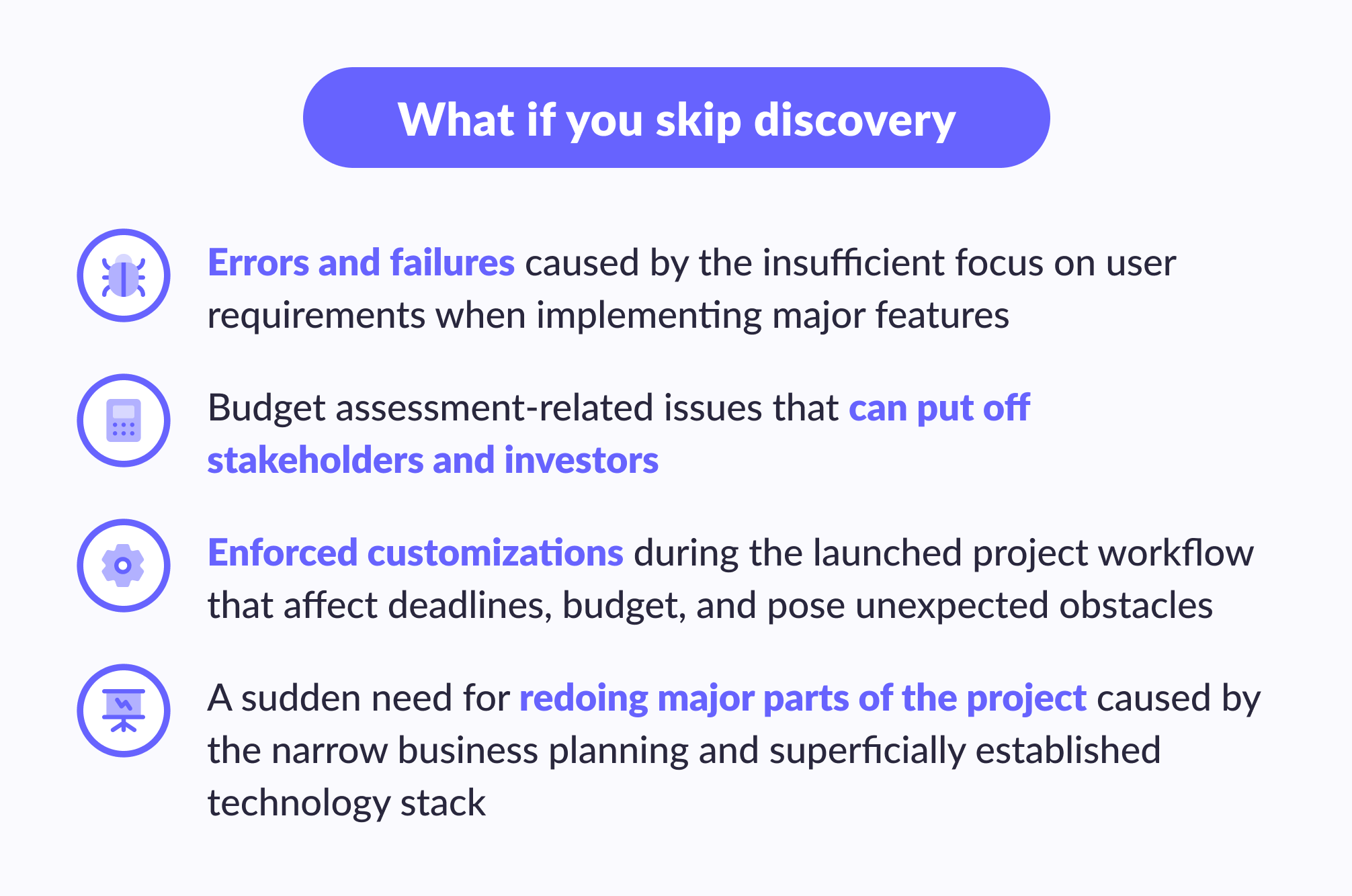
Skipping the product discovery process in the development of a new IT product can have several negative consequences. The project’s discovery phase is an essential part of the product development lifecycle as it helps gather critical information and insights that guide the subsequent stages of development. Here are some potential outcomes of skipping the project discovery phase.
1. Inadequate Understanding Of User Needs
The main aims of the discovery phase are conducting market research, user interviews, and competitor analysis to understand user needs, pain points, and existing technical solutions. By skipping this phase, the IT company may have a limited understanding of the target audience, which can lead to developing a product that does not effectively address user requirements.
2. Unclear Project Vision And Strategy
The project discovery phase helps shape the product vision and strategy by defining goals, identifying key features, and establishing a project roadmap. Without this phase, the IT company may lack a clear direction for the product, resulting in a lack of focus, wasted resources, and potential conflicts during development.
3. Higher Development Costs And Delays
Without a proper understanding of user needs and a clear product vision, the development process can become inefficient. This may result in frequent iterations, scope creep, and rework, leading to increased costs and delays in product delivery.
4. Increased Development Risks
The discovery phase allows for identifying potential technical challenges, assessing feasibility, and understanding the project scope. Skipping this phase can lead to unforeseen risks and complications during development, such as underestimating the required resources, encountering technical roadblocks, or discovering fundamental flaws in the initial concept.
5. Poor Market Fit And Low Adoption
By neglecting the discovery phase, the IT company runs the risk of developing a product that does not meet market demands or lacks competitive differentiation. This can result in poor market fit, low user adoption, and ultimately, limited success in the market.
What Do We Do During The Discovery Phase?
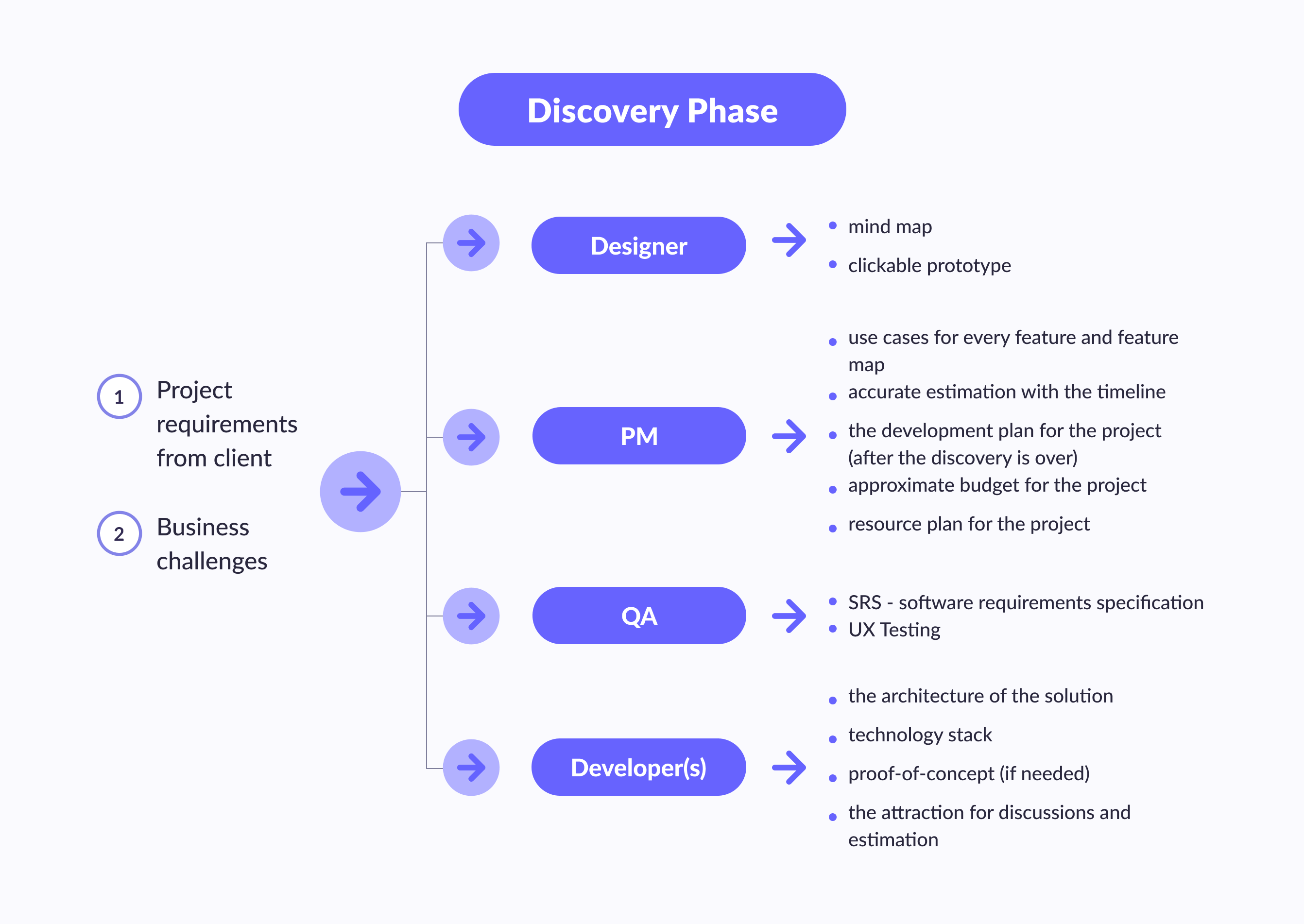
We create a series of documents and schemes for effective work on the project.
Lean Model Canvas
Firstly, a conceptual description of the business model of the future product for MVP is created in the form of a diagram describing all business processes related to the product: proposal, infrastructure, consumers, and financial aspects.
User Journey Map
In addition, we create a “map” of customer communication with the product. This is a visual graph of the user’s interaction with the product. It includes all the proposed points and channels of such interaction, as well as the client’s visualized experience, taking into account their thoughts, emotions, goals, motives, and fears on the way to achieving the result.
User Flow
To determine how the user will interact with the interface of the new product, we create User Flow in the form of schematically shown screens of the software project and transitions between them. Thus, the design of user behavior scenarios through visual interface prototypes takes place.
User Stories
Then we create a brief description of how the system will be used. In it, we describe functional requirements for the system and acceptance criteria. User Stories allow the customer to effectively prioritize the project implementation of product functionality.
5. Product Vision
In this document, we describe the general objectives of the project execution and the proposed solution. This allows you to better understand the goals of creating a product, its potential, and its prospects. Product Vision is useful to all parties involved in the development - developers, staff, marketing department, etc.
6. Non-Functional Requirements
Our team also issues recommendations regarding system properties or limitations that are not related to the system behavior - the optimal tech stack, infrastructure architecture, and expected load.
What Are The Main Benefits Of The Discovery Phase?
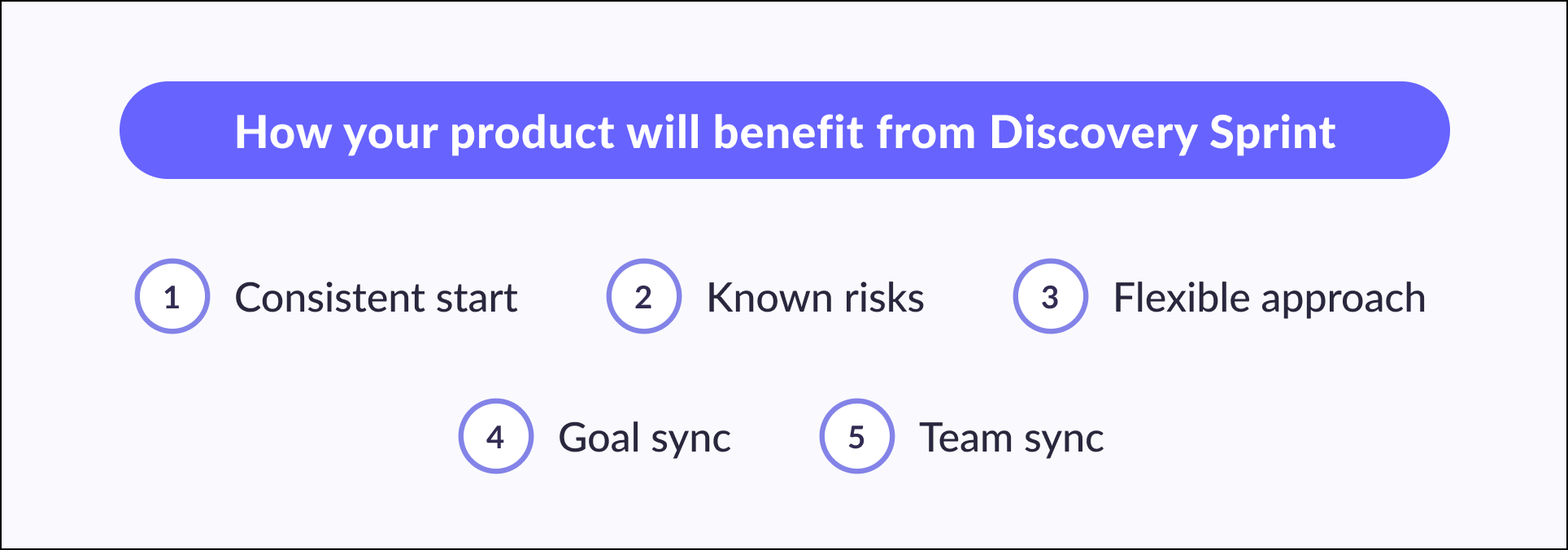
There are many benefits of doing preliminary analysis and research.
Quite often, when startups come to us, they have an idea but don’t have an understanding of what the project should be like from a technical point of view, or what components it should contain. We are also faced with the fact that it is difficult for customers to evaluate what is really in demand by users. In addition, customers may not have enough technical knowledge and experience to make an exhaustive list of the necessary software elements of the product.
We always offer the project discovery phase. The study is conducted by our business analyst, designer, and company project managers. In the course of communication, they find out the wishes of the client. Then a market analysis is carried out and a project description is formulated.
This approach minimizes the number of changes in the development process since the project volume is determined along with other key factors, such as the type of solutions required, functions and functionality, optimal platforms to use, deadlines, and budget.
Having determined all the details of the project in advance, the customer receivesseveralf advantages. Here are the main ones:
- Refinement of the idea and essence of the project, based on real analysis.
- Identification of some aspects of the project that were not taken into account initially.
- Understanding the expectations and problems of users based on competitor research.
- The opportunity to get an expert assessment of the project and methods of working on it, as well as consideration of alternative solutions and technologies proposed by the contractor.
- Compilation of a clear list of user accounts for the project.
- Avoiding the need to make costly additional edits and changes during the development.
- Establishing a balance between the business goals of the client and the interests of the end product users.
- The opportunity to understand how much the contractor meets the expectations of the customer, how comfortable the partnership interaction is, and make the final product decision on further cooperation.
An additional advantage for the client is the fact that, having received a clear technical description, a work plan, and an assessment of the required costs, it will be easier for them to receive financing from potential investors.


Thank you for Subscription!
Tools for a Discovery Phase
There are several groups of tools that can be useful during the project discovery phase to gather insights, conduct research, and facilitate collaboration. Here are some commonly used tools.
Project Management Tools. Tools like Jira, Asana, or Trello can help in organizing and managing the discovery phase activities. These project management tools allow teams to create tasks, set deadlines, see development timelines, assign responsibilities, and track the project's progress.
Communication and Collaboration Tools. Tools like Slack, Microsoft Teams, or Google Workspace facilitate communication and collaboration among project team members. They provide channels for real-time discussions, document sharing, and remote collaboration.
Survey and Feedback Tools. Tools like Google Forms, SurveyMonkey, or Typeform enable the collection of user feedback and opinions. Market surveys can be designed to gather information about user needs, preferences, and pain points.
Prototyping and Wireframing Tools. Tools like Sketch, Figma, or Adobe XD are used to create interactive prototypes or wireframes. These tools allow designers to visualize and iterate on the product's user interface and experience before moving into development.
Analytics and Data Tools. Tools like Google Analytics, Mixpanel, or Hotjar can provide valuable insights into user behavior, website traffic, and user interactions. These tools help in understanding user engagement and making data-driven decisions during the discovery phase.
Competitive Research Tools. Tools like SimilarWeb, Ahrefs, or SpyFu assist in conducting competitive research and analyzing competitors' strategies. They provide information about market trends, competitor research, keyword analysis, and search engine rankings.
Transform your business idea into a clear product vision!
Check out our Discovery Phase Service options to get a scope, objectives, and potential solutions for the project ahead.
User Research Tools. Tools like UserTesting, Optimal Workshop, or Validately support user research activities. They facilitate user testing, remote usability testing, and user interviews, allowing teams to gain direct insights from target users.
Mind Mapping and Diagramming Tools. Tools like Miro, Lucidchart, or MindMeister aid in visualizing ideas, creating mind maps, and diagramming workflows. They can be useful for brainstorming, organizing thoughts, and capturing key information during the discovery phase of a project.
Data Visualization Tools. Tools like Tableau, Power BI, or Google Data Studio help in visualizing and analyzing data. They allow teams to create charts, graphs, and dashboards to better understand and present insights from user research or market data.
Documentation and Knowledge Sharing Tools. Tools like Confluence, Notion, or Evernote are used for documentation and knowledge sharing. They enable teams to store and access project-related information, research findings, meeting notes, and other important documents.
What Is The Average Cost Of The Discovery Phase For The IT Project?
The average discovery phase of the project cost can vary depending on various factors such as the complexity of the project, the size of the team involved, the duration of the phase, and the specific requirements of the project. Additionally, the rates charged by different service providers or consultants can also vary.
As a rough estimate, the Discovery Phase for a medium-sized project typically ranges from $10,000 to $20,000. For larger and more complex projects, the cost can range from $20,000 to $35,000 or more.
It's important to note that these are just average estimates, and the actual cost can be higher or lower depending on the specific circumstances of your project.
How Geniusee Conducts the Discovery Phase?
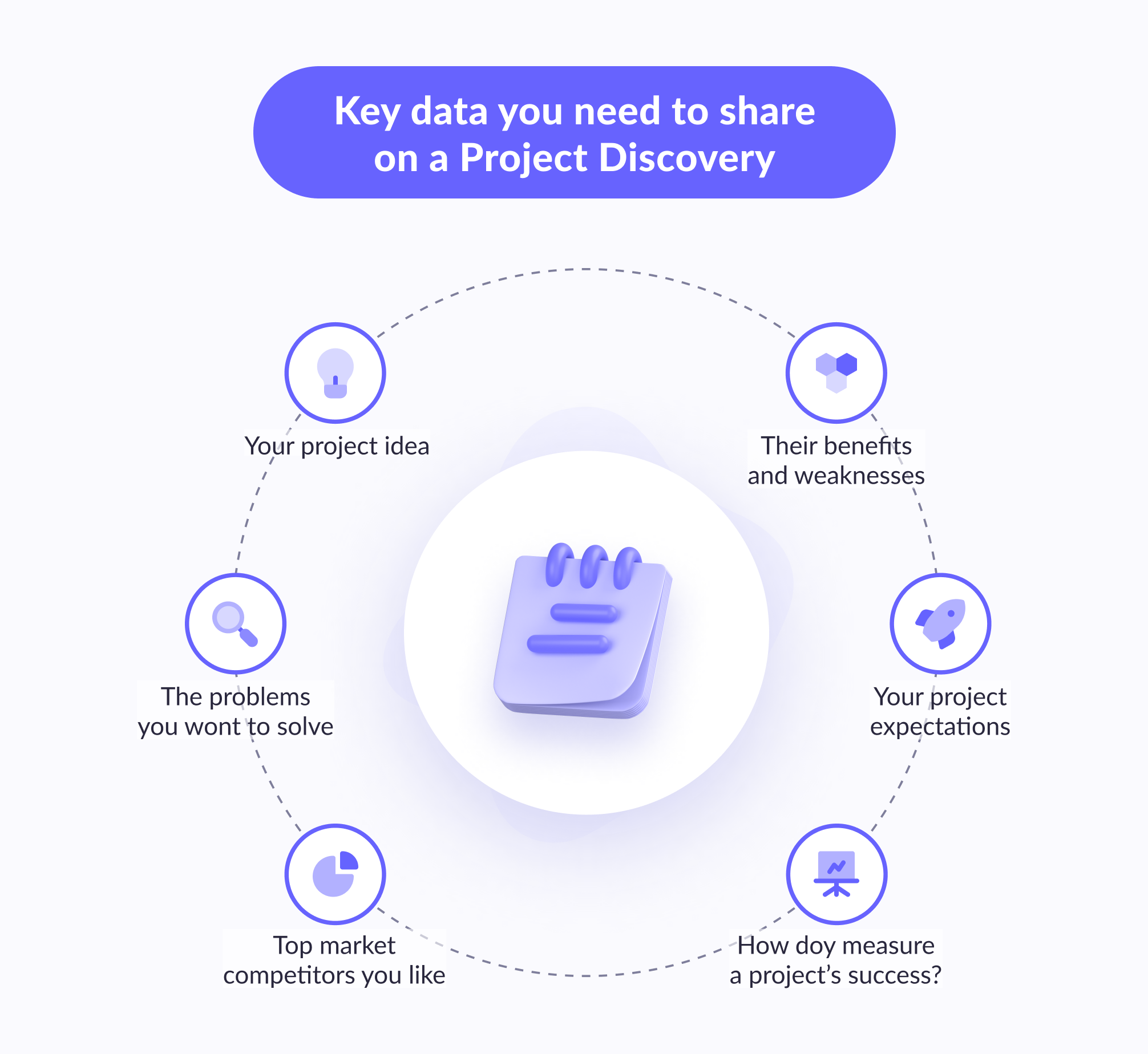
During this discovery phase, Geniusee aims to transform ideas into a clear product vision or provide new life to existing software projects. The project discovery phase helps clients gain valuable insights about design preferences, features, and services that will attract users. It serves several purposes, including finalizing the vision, validating the idea, ensuring market fit, identifying the business strategy, predicting and reducing risks, careful budget planning, defining goals and scope of work for the Minimum Viable Product, and building the groundwork for additional project funding.
The Geniusee project discovery phase deliverables that clients can expect include:
Product Overview
- Problem statement: A clear understanding of the problem the product aims to solve.
- Key functionality required for MVP: Identification of the essential features and functionalities needed for the Minimum Viable Product.
- Business objectives: Clearly defined objectives and goals for the product.
Architecture Decisions For Product Implementation
- Conclusion on product's interoperability with other tools and systems: Assessment of how the product will integrate with existing tools and systems.
- Product's physical structure overview: High-level overview of the product's architectural components and infrastructure.
UI/UX Concept
Product prototype representing the concept of user's interaction with the product: A visual representation or interactive prototype illustrating how users will interact with the product, showcasing the user interface and user experience.
To-Do List
- Product backlog: A list of prioritized tasks and features to be developed during the project.
- First release (MVP) sized backlog: A subset of the product backlog specifically focused on the features and tasks required for the initial Minimum Viable Product release.
These deliverables aim to provide clients with a comprehensive understanding of their product, its software requirements specification, and a roadmap for development. By going through the project discovery phase, clients can gain clarity and make informed decisions before proceeding to the next stages of the software project development.
Thanks to the discovery phase of a project, we lay the foundation for effective work and, as a result, we provide high-quality software solutions that are designed taking into account the individual needs of our customers.
Conclusion
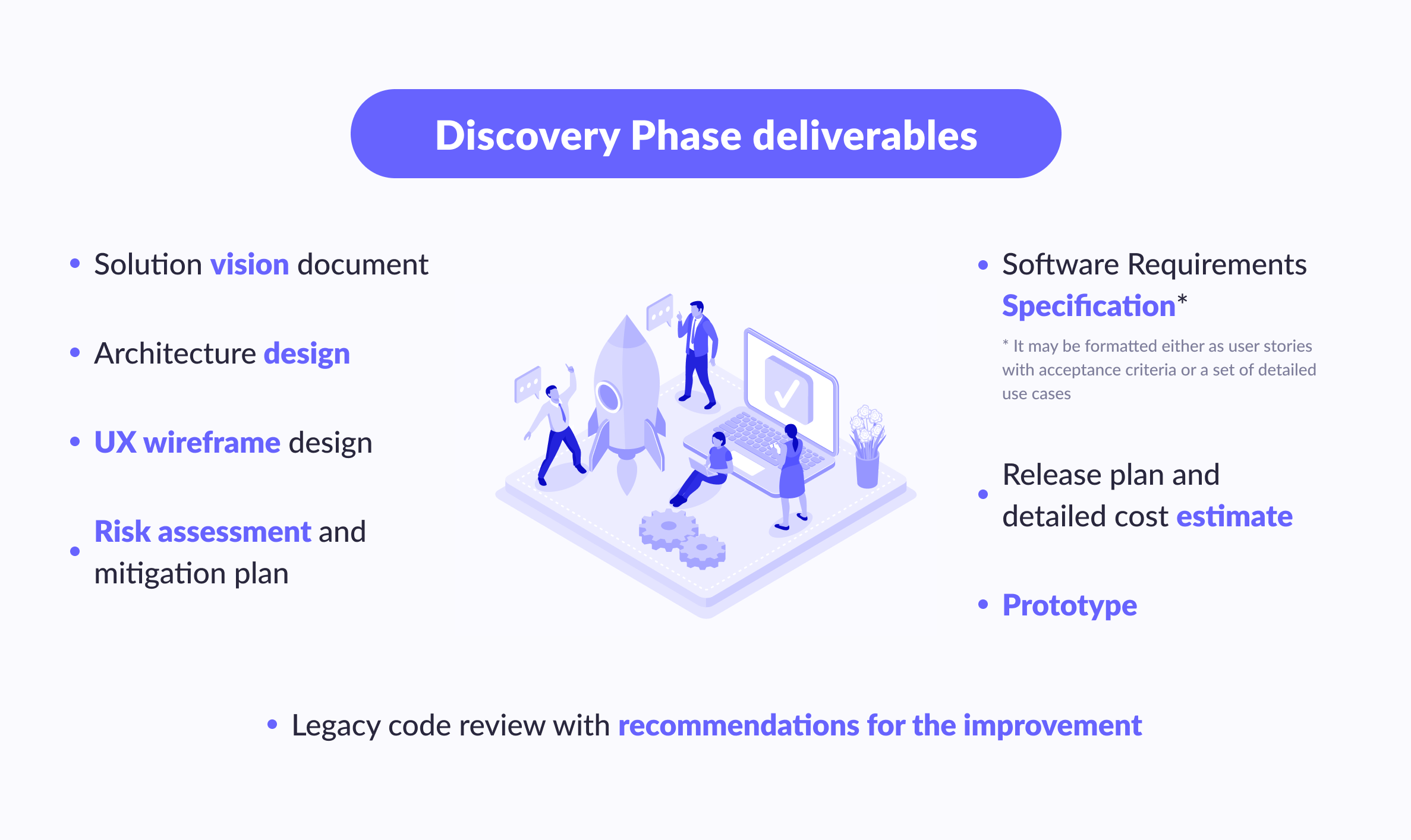
Are you looking to kickstart your software development project with a strong foundation? The project discovery stage is a crucial step that should not be skipped. By conducting thorough research, gathering insights, and creating a comprehensive plan, you can ensure that your project meets user needs, aligns with your business goals, and avoids costly mistakes down the road. Don't miss out on the opportunity to gain a deep understanding of your product's potential and set a clear direction for its development.
Order Geniusee Discovery Phase service today and pave the way for a project success tailored to your specific project software requirements specification. Contact us now to get started.














